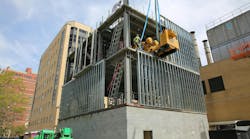In many companies, when critical equipment is down various managers start peppering the repair crews with “Are we there yet?” questions, as if the people in those crews weren’t aware they need to get that equipment running again. It is almost never the case that the repair team is slacking.
Common causes of preventable repair delays include these:
- Spare part(s) not available.
- Spare part(s) available, but unusable.
- Manufacturer documentation is not where it’s supposed to be.
- The repair locker (contains special tools and supplies for this equipment) has not been maintained or was raided for another purpose.
- All the people trained on this system are away being trained on something else unrelated to it.
- Boxes are stacked in front of the equipment and/or other equipment that must be locked out /tagged out to service it.
- The operators did not remove in process work from the area or equipment while waiting for the repair team to arrive.
- The poor lighting means temporary lighting must be set up, with extension cords run and properly routed, secured, and guarded.
Keep track of what gets in the way of the repair team, and then solve the problem.




